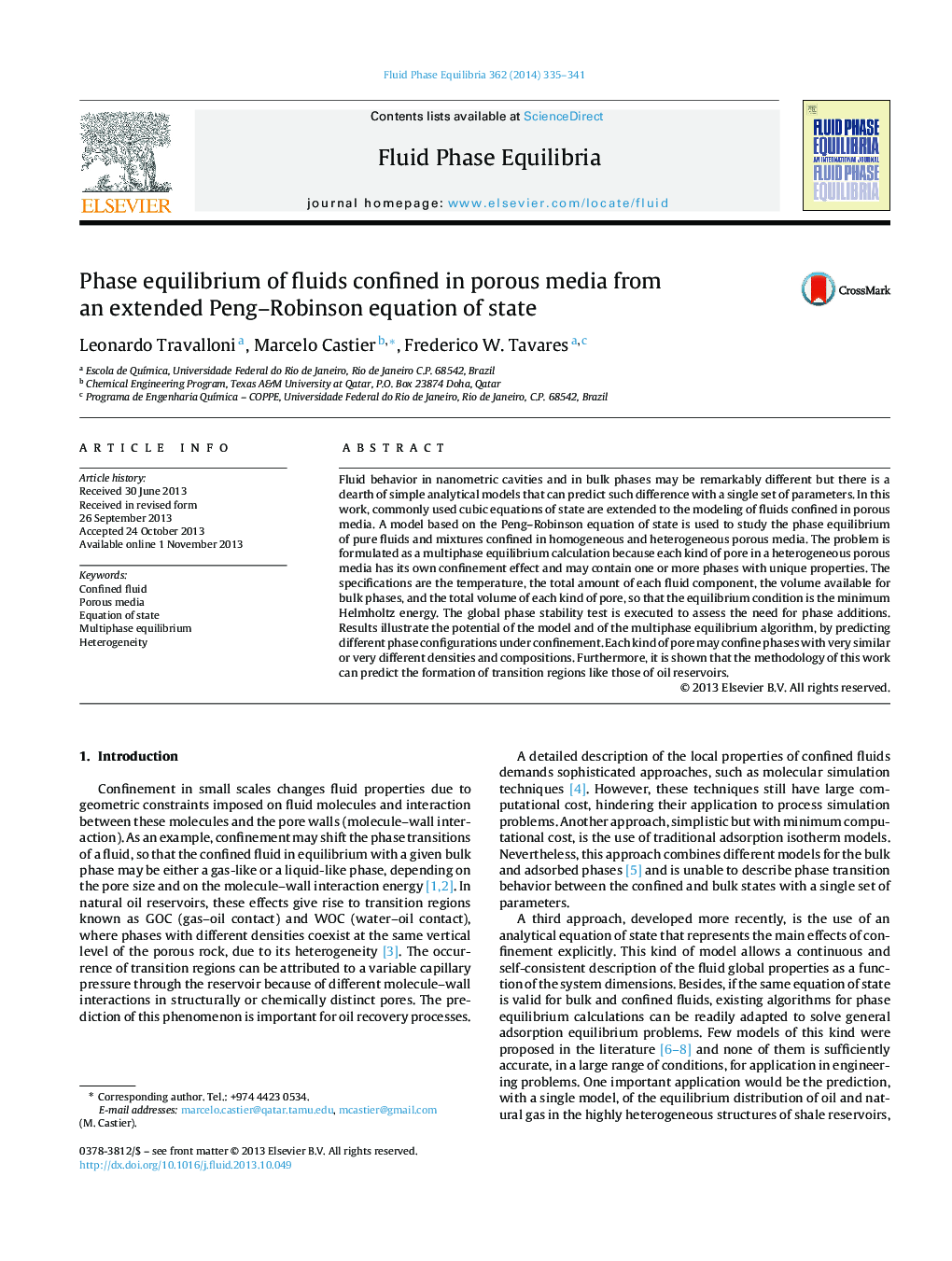| Article ID | Journal | Published Year | Pages | File Type |
|---|---|---|---|---|
| 202899 | Fluid Phase Equilibria | 2014 | 7 Pages |
Fluid behavior in nanometric cavities and in bulk phases may be remarkably different but there is a dearth of simple analytical models that can predict such difference with a single set of parameters. In this work, commonly used cubic equations of state are extended to the modeling of fluids confined in porous media. A model based on the Peng–Robinson equation of state is used to study the phase equilibrium of pure fluids and mixtures confined in homogeneous and heterogeneous porous media. The problem is formulated as a multiphase equilibrium calculation because each kind of pore in a heterogeneous porous media has its own confinement effect and may contain one or more phases with unique properties. The specifications are the temperature, the total amount of each fluid component, the volume available for bulk phases, and the total volume of each kind of pore, so that the equilibrium condition is the minimum Helmholtz energy. The global phase stability test is executed to assess the need for phase additions. Results illustrate the potential of the model and of the multiphase equilibrium algorithm, by predicting different phase configurations under confinement. Each kind of pore may confine phases with very similar or very different densities and compositions. Furthermore, it is shown that the methodology of this work can predict the formation of transition regions like those of oil reservoirs.
